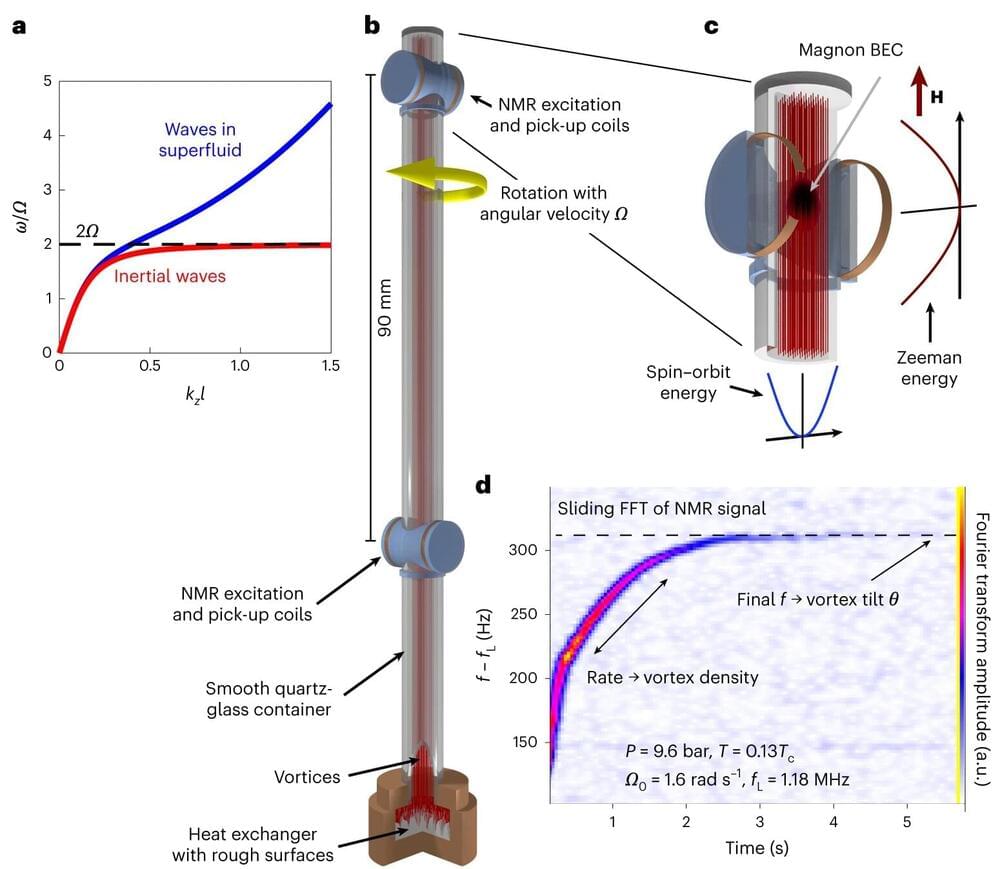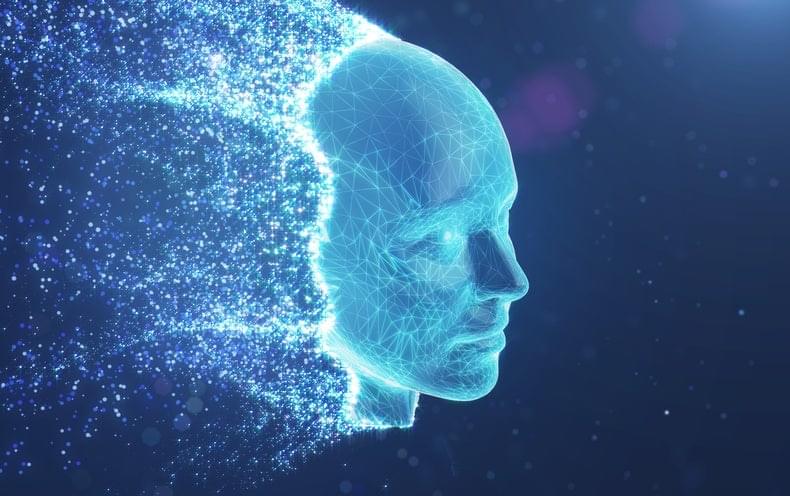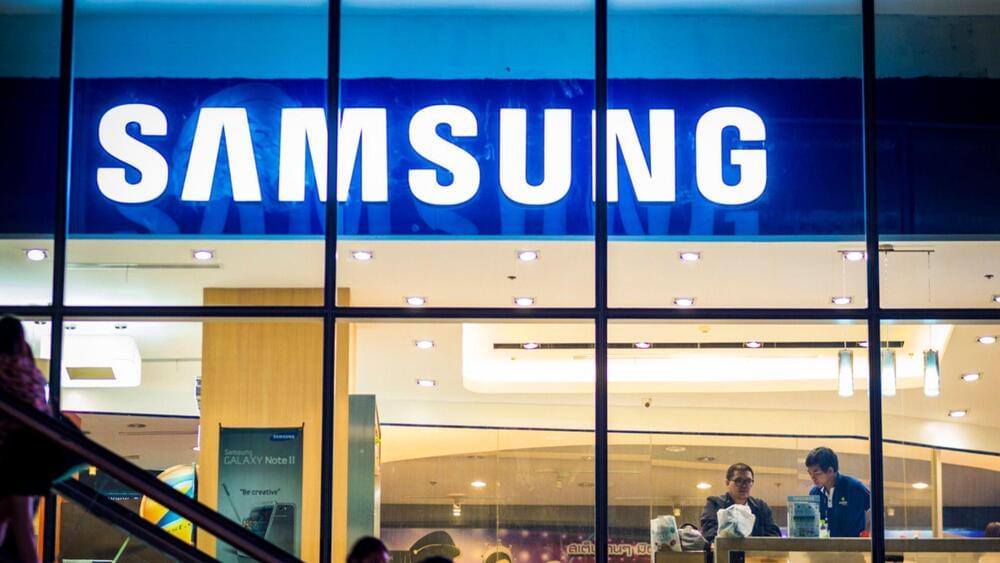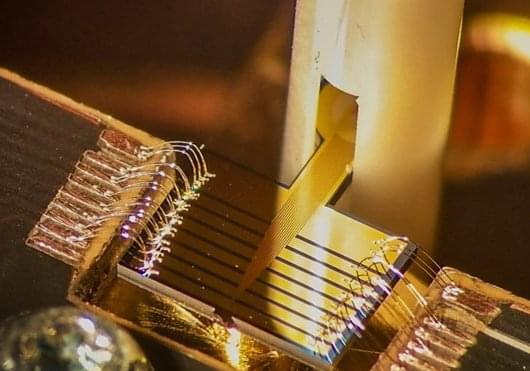Samsung Electronics said Wednesday it plans to invest 300 trillion Korean won ($228 billion) in a new semiconductor complex in South Korea.



A study of the electron excitation response of DNA to proton radiation has elucidated mechanisms of damage incurred during proton radiotherapy.
Radiobiology studies on the effects of ionizing radiation on human health focus on the deoxyribonucleic acid (DNA) molecule as the primary target for deleterious outcomes. The interaction of ionizing radiation with tissue and organs can lead to localized energy deposition large enough to instigate double strand breaks in DNA, which can lead to mutations, chromosomal aberrations, and changes in gene expression. Understanding the mechanisms behind these interactions is critical for developing radiation therapies and improving radiation protection strategies. Christopher Shepard of the University of North Carolina at Chapel Hill and his colleagues now use powerful computer simulations to show exactly what part of the DNA molecule receives damaging levels of energy when exposed to charged-particle radiation (Fig. 1) [1]. Their findings could eventually help to minimize the long-term radiation effects from cancer treatments and human spaceflight.
The interaction of radiation with DNA’s electronic structure is a complex process [2, 3]. The numerical models currently used in radiobiology and clinical radiotherapy do not capture the detailed dynamics of these interactions at the atomic level. Rather, these models use geometric cross-sections to predict whether a particle of radiation, such as a photon or an ion, crossing the cell volume will transfer sufficient energy to cause a break in one or both of the DNA strands [4– 6]. The models do not describe the atomic-level interactions but simply provide the probability that some dose of radiation will cause a population of cells to lose their ability to reproduce.

Most people only encounter turbulence as an unpleasant feature of air travel, but it’s also a notoriously complex problem for physicists and engineers. The same forces that rattle planes are swirling in a glass of water and even in the whorl of subatomic particles. Because turbulence involves interactions across a range of distances and timescales, the process is too complicated to be solved through calculation or computational modeling—there’s simply too much information involved.
Scientists have attempted to tackle the issue by studying the turbulence that occurs in superfluids, which is formed by tiny identical whirls called quantized vortices. A key question is how turbulence happens on the quantum scale and how is it linked to turbulence at larger scales.
Researchers at Aalto University have brought that goal closer with a new study of quantum wave turbulence. Their findings, published in Nature Physics, demonstrate a new understanding of how wave-like motion transfers energy from macroscopic to microscopic length scales, and their results confirm a theoretical prediction about how the energy is dissipated at small scales.
A quantum device fabricated by Zhejiang University researchers could help to advance the design of quantum computers as it offers topological control over the units that store information within them. The team’s results were published in Science in December 2022.
Since their discovery around 2007, quantum materials, known as topological insulators, have been generating a lot of excitement due to their intriguing properties. For example, they are insulating in their interior, but conducting on their surfaces. This property stems from the topological nature of these materials, which makes them robust to deformations, so electrons moving along their surfaces resist any obstacles that might obstruct their flow.
Researchers have started to explore similar topological systems that are based on light rather than electrons—a field known as topological photonics. But so far, most such light-based systems have used classical forms of light rather than quantum ones. The ability to use quantum forms of light would open up many more possibilities and offer an opportunity to explore the quantum topology of light.

One of the first practical applications of the much-hyped but little-used quantum computing technology is now within reach, thanks to a unique approach that sidesteps the major problem of scaling up such prototypes.
The invention, by a University of Bristol physicist, who gave it the name “counterportation,” provides the first-ever practical blueprint for creating in the lab a wormhole that verifiably bridges space, as a probe into the inner workings of the universe.
By deploying a novel computing scheme, revealed in the journal Quantum Science and Technology, which harnesses the basic laws of physics, a small object can be reconstituted across space without any particles crossing. Among other things, it provides a “smoking gun” for the existence of a physical reality underpinning our most accurate description of the world.

Quantum computing technology is within reach due to an innovative method that overcomes the significant challenge of scaling up these prototypes.
The invention, by a University of Bristol physicist, who gave it the name ‘counterportation’, provides the first-ever practical blueprint for creating in the lab a wormhole that verifiably bridges space, as a probe into the inner workings of the universe.


It’s part of a South Korean project to develop one of the largest semiconductor manufacturing hubs in the world.
An investment of $230 billion is expected to be made in the next two decades by Samsung to further semiconductor manufacturing.
The mega cluster, which will feature five new semiconductor plants built by Samsung, will be set in the Gyeonggi Province and is expected to be completed by 2042.
Holgs/iStock.
The investment will be a part of a South Korean project to develop one of the largest semiconductor manufacturing hubs in the world, near its capital city of Seoul. Samsung leads in the production of memory chips, smartphones, and TVs in the world.
Chinese Phone blog dedicated to providing breaking news, expert reviews, Chinese Phones, Android Apps, Chinese Android Tablets and how tos.

How can we combat data theft, which is a real issue for society? Quantum physics has the solution. Its theories make it possible to encode information (a qubit) in single particles of light (a photon) and to circulate them in an optical fiber in a highly secure way. However, the widespread use of this telecommunications technology is hampered in particular by the performance of the single-photon detectors.
A team from the University of Geneva (UNIGE), together with the company ID Quantique, has succeeded in increasing their speed by a factor of twenty. This innovation, published in the journal Nature Photonics, makes it possible to achieve unprecedented performances in quantum key distribution.
Buying a train ticket, booking a taxi, getting a meal delivered: these are all transactions carried out daily via mobile applications. These are based on payment systems involving an exchange of secret information between the user and the bank. To do this, the bank generates a public key, which is transmitted to their customer, and a private key, which it keeps secret. With the public key, the user can modify the information, make it unreadable and send it to the bank. With the private key, the bank can decipher it.